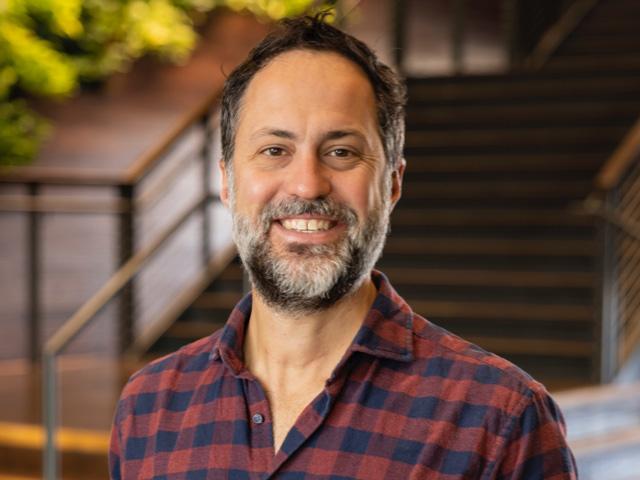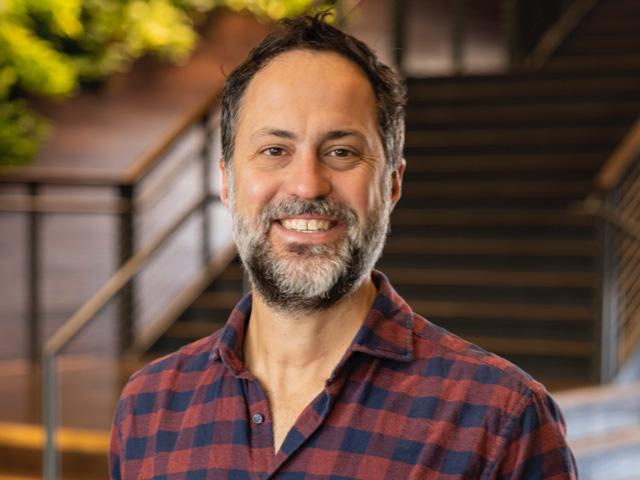MachineryLink
Q&A: Insider Insight to Autonomous Farming
Deere & Company announced the purchase of Bear Flag Robotics back last fall. Founded in 2017, the technology company develops retrofit, autonomous driving technologies for existing machines. Deere began working with Bear Flag in 2019 as part of its Startup Collaborator program, which works with startup companies whose technology could add value for Deere customers.
Bear Flag autonomous technology leverages a combination of LiDAR, radar and camera sensors, as well as the computer resources that enable tractors to work autonomously. LiDAR, or light detection and ranging, is a remote sensing method that measures distances of objects on the earth's surface.
"One of the biggest challenges farmers face today is the availability of skilled labor to execute time-sensitive operations that impact farming outcomes. Autonomy offers a safe and productive alternative to address that challenge head on," Igino Cafiero, co-founder of Bear Flag Robotics, said at the time of the purchase.
Move forward to last week and CES 2022 (formerly Consumer Electronics Show) in Las Vegas where Deere rolled out its first autonomous field tool -- a combination of its 8R 410 tractor, equipped with six sets of stereo cameras and Deere's TruSet enabled chisel plow.
See the original Bear Flag/John Deere purchase announcement here: https://www.dtnpf.com/….
For a related story, this about the Monarch tractor, a fully electric, driver-optional, smart tractor go here:
As the CES opened on its three-day run, DTN/PF had time with Cafiero to talk about Bear Flag's work with Deere and his outlook on the world of autonomy.
Cafiero is an entrepreneur, engineer, as well as co-founder of Bear Flag Robotics. Prior to Bear Flag, he was an early engineer at Insieme Networks, which was acquired by Cisco Systems in 2013. He founded his first company in 2007, a profitable automotive parts marketing company. Cafiero earned a Bachelor of Science in electrical and computer engineering from Carnegie Mellon University, a master's in electrical engineering from Stanford University and an MBA from the Wharton School.
The following is our conversation.
**
DTN/PF: Igino, thanks for talking with us today. Tell us about your experiences with Deere, what you've seen since it purchased Bear Flag Robotics last August.
P[L1] D[0x0] M[300x250] OOP[F] ADUNIT[] T[]
Cafiero: The curtain was pulled back. Seeing all the technology Deere has developed is just exceptional. It's been absolutely inspiring and motivational to see all the leading-edge tech they are working on.
DTN/PF: How did Bear Flag and Deere get together?
Cafiero: This has been a relationship a long time coming. We were in John Deere's startup collaborator program in 2019. We wanted to learn more about how the market leader thinks about agriculture worldwide, where they see tech going, where they see the biggest opportunities to deliver more value to growers. I think, from their perspective, they want to understand how smaller groups of agile teams like Bear Flag approach that problem. This acquisition, from our perspective, is a natural extension of that relationship with Deere, we wanted to work with them.
DTN/PF: So, the merger of expertise is about technology, technology development?
Cafiero: No, we attach a higher purpose. These are teams of engineers that want to deliver value to customers. It's not about the tech, it's about delivering the value that tech can provide to our customers. Goodness knows, I can tell you how cool the tech is, but it's really cool that it's actually in the field right now. And that is that higher purpose that gets everyone fired up.
(Editor's Note: Deere says there will be more than 10, but less than 50 autonomous 8R/TruSet chisel plows working fields this year.)
DTN/PF: Tell us about autonomy. How would you describe its place in agriculture today?
Cafiero: Bear Flag (has been working with) sugar and leafy greens. The focus of Deere has been corn and soy. But, then, looking beyond that, just the different production systems, the different opportunities we have, these are the early innings. We're just getting started. We couldn't be more thrilled about the opportunities ahead of us.
DTN/PF: Let's talk about the technologies Bear Flag and Deere are deploying. You use LiDAR and Deere on this autonomous 8R tractor is using a system of six stereo cameras. Would you explain the difference?
Cafiero: We've taken different approaches from the sensor perspective. But there's a ton of overlap in the capabilities themselves. We saw opportunities (with LIDAR) in different production systems and different environments. We had specialty crops or orchards and canopy environments, or sugar (that benefit from) different sensor modalities. These are areas we will continue to develop.
DTN/PF: Are there advantages, LiDAR over cameras?
Cafiero: The sensors have different strengths. They work fundamentally differently. Some of them are passive, like cameras where they receive information. Others are active, they're actually bouncing light off objects to detect them. So, they have fundamentally different physics in how they work.
DTN/PF: Are there strengths and weaknesses to them?
Cafiero: LiDAR isn't really affected by light conditions. In the middle of the day, sunset, nighttime, LiDAR will see the same thing. Cameras can detect color and infer a lot more about what kind of objects they are seeing because of color.
DTN/PF: Talk about this tractor -- 40,000 pounds in all -- and you're telling farmers they can swipe the app and walk away from their autonomous 8Rs. What's been your experience?
Cafiero: As much as you see these things online, you know, YouTube or whatever, you need to see it operating (in person) in the field. That's a totally different thing. (For the farmer) it's a huge 'a-ha' moment. The guys are like, "I knew this was coming, but I didn't know it would be in my field today." They understand that the tractor will do the job. Farmers are innovators, and it will take them about 20 minutes to say, "I've got 10 other things I need to do." And they will walk away.
DTN/PF: Tell us about Bear Flag. You're a co-founder. What informed your early interest in automation and autonomy?
Cafiero: I grew up mining, and so we started looking at a space in mining. Then we were introduced to some farmers. That changed the course of my life and my business partners' lives. It took about a day to really fall in love with this problem. Not only growers, but just the impact that we could have with automation on the farm. It's just so palpable, it's so immediate, like the impact that we've had in a short amount of time is already outsized.
DTN/PF: How do you define the "problem?"
Cafiero: Growers have all kinds of challenges. Labor scarcity is probably the most pressing. But there are issues around timing, getting in and out of the field before weather comes in, and there are other constraints. In California, when you harvest, there are real dollars attached to time. If we can help them with those problems, they and we will be successful. Autonomy is one way to do that, it is one solution Deere is developing in order to deliver value back to the grower.
DTN/PF: What's your message to growers?
Cafiero: Our position today is exciting, but our trajectory is even more exciting. How can we go from what was effectively a drawing only a number of years ago, to in-field (tractors) today, to full production systems by the end of the decade. That's exciting.
Dan Miller can be reached at dan.miller@dtn.com
Follow him on Twitter @DMillerPF
(c) Copyright 2022 DTN, LLC. All rights reserved.






Comments
To comment, please Log In or Join our Community .